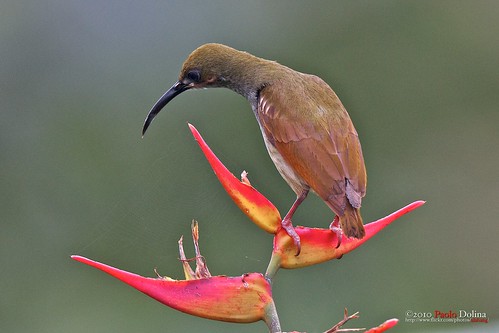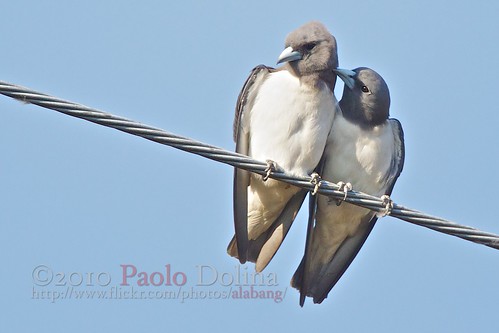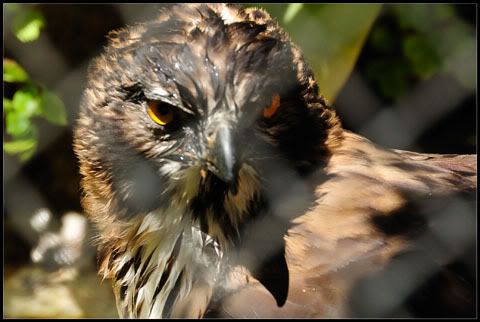Results 291 to 300 of 1262
Thread: Bird photography
-
08-05-2010, 10:12 AM #291
-
08-05-2010, 10:55 AM #292
-
08-05-2010, 01:54 PM #293
pwede apil...newbie here:

Last edited by erwinp; 08-05-2010 at 02:02 PM.
-
08-05-2010, 02:03 PM #294
-
08-05-2010, 03:02 PM #295
-
08-05-2010, 09:26 PM #296
-
08-05-2010, 09:30 PM #297
-
12-29-2010, 08:34 PM #298

Black-crowned Night Heron (Nycticorax nycticorax) by alabang, on Flickr
Photographed in the wilds of Valenzuela City
The Black-crowned Night Heron (Nycticorax nycticorax) commonly abbreviated to just Night Heron in Eurasia, is a medium-sized heron found throughout a large part of the world, except in the coldest regions and Australasia (where replaced by the closely related Rufous Night Heron, with which it has hybridized in the area of contact).
Adults are approximately 64 cm long and weigh 800 g. They have a black crown and back with the remainder of the body white or grey, red eyes, and short yellow legs. Young birds are brown, flecked with white and grey. These are short-necked and stout herons.
Source: Black-crowned Night Heron - Wikipedia, the free encyclopedia

A lie has no leg, but a scandal has wings by alabang, on Flickr
Photographed in the wilds of Muntinlupa City
The Blue-tailed Bee-eater, Merops philippinus is a near passerine bird in the bee-eater family Meropidae. It breeds in southeastern Asia. It is strongly migratory.
This species is sometimes considered to be conspecific with the Blue-cheeked Bee-eater, M. persicus.
Blue-tailed Bee-eater from behind, showing the blue rump and tail
This species, like other bee-eaters, is a richly-coloured, slender bird. It is predominantly green; its face has a narrow blue patch with a black eye stripe, and a yellow and brown throat; the tail is blue and the beak is black. It can reach a length of 23-26 cm, including the two elongated central tail feathers. Sexes are alike.
Source: Blue-tailed Bee-eater - Wikipedia, the free encyclopedia

Naked-faced Spiderhunter (Arachnothera clarae) by alabang, on Flickr
Photographed in the wilds of La Mesa Eco Park
The Naked-faced Spiderhunter (Arachnothera clarae) is a species of bird in the Nectariniidae family. It is endemic to the Philippines.
Its natural habitat is subtropical or tropical moist lowland forests.
Source: Naked-faced Spiderhunter - Wikipedia, the free encyclopedia

Black-headed Munia (Lonchura atricapilla) by alabang, on Flickr
Photographed in the wilds of Cebu Light Industrial Park
The Black-headed Munia, Lonchura atricapilla (formerly considered as a subspecies of the Tricoloured Munia Lonchura malacca atricapilla) also known as Chestnut Munia, is a small passerine bird. This estrildid finch is a resident breeding bird in Bangladesh, Brunei, Cambodia, China, India, Indonesia, Laos, Malaysia, Burma, Nepal, Philippines, Singapore, Taiwan, Thailand, & Vietnam. Known as maya pula ("red maya", to distinguish it from the predominantly brownish Tree Sparrow which is also called maya) in the Philippines, this bird was the former national bird of the Philippines (the Philippine national bird is now the Philippine eagle).
Source: Black-headed Munia - Wikipedia, the free encyclopedia

White-breasted Waterhen (Amaurornis phoenicurus) by alabang, on Flickr
Photographed in the wilds of Valenzuela City
The White-breasted Waterhen (Amaurornis phoenicurus) is a waterbird of the rail and crake family Rallidae that is widely distributed across South and Southeast Asia. They are dark slaty birds with a clean white face, breast and belly. They are somewhat bolder than most other rails and are often seen stepping slowly with their tail cocked upright in open marshes or even drains near busy roads. They are largely crepuscular in activity and during the breeding season after the first rains make loud and persistent croaky calls.
Source: White-breasted Waterhen - Wikipedia, the free encyclopedia

Common Kingfisher, Alcedo atthis by alabang, on Flickr
Photographed in the wilds of Muntinlupa City
The Common Kingfisher, Alcedo atthis, also known as Eurasian Kingfisher or River Kingfisher, is a small kingfisher with seven subspecies distributed across Eurasia and North Africa. It is resident in much of its range, but migrates from areas in which the rivers freeze in winter.
This sparrow-sized bird has the typical short-tailed, large-headed kingfisher profile; it has blue upperparts, orange underparts and a long bill. It feeds mainly on fish, caught by diving, and has special visual adaptions to enable it to pursue its prey under water. The glossy white eggs are laid in a nest at the end of a burrow in a riverbank.
Source: Common Kingfisher - Wikipedia, the free encyclopedia

At home I am a nice guy: but I don't want the world to know. Humble people, I've found, don't get very far. by alabang, on Flickr
Photographed in the wilds of Muntinlupa City
The White-breasted Woodswallow, Artamus leucorynchus, is a small passerine bird which breeds from the Andaman Islands east through Indonesia and northern Australia. The name "woodswallow" is a misnomer as they are not closely related to true swallows. Instead, they belong to the family Artamidae, which also includes butcherbirds, currawongs and the Australian Magpie.
Source: White-breasted Woodswallow - Wikipedia, the free encyclopedia

Purple Swamphen (Porphyrio porphyrio pulverulentis) by alabang, on Flickr
Photographed in the wilds of Valenzuela City
The Purple Swamphen (Porphyrio porphyrio pulverulentis), also known as the African Purple Swamphen, Purple Moorhen, Purple Gallinule or Purple Coot, is a large bird in the family Rallidae (rails). From its name in French, talève sultane, it is also known as the Sultana Bird. It should not be confused with the American Purple Gallinule, Porphyrio martinica. The common name in New Zealand, used for the subspecies P. p. melanotus, is Pūkeko, which is the Māori name. The variant found in Samoa, P. p. samoensis, is called "manuali'i," meaning "chiefly bird" in the Samoan language.
Source: Purple Swamphen - Wikipedia, the free encyclopedia

Be not overcome of evil, but overcome evil with good. - Romans by alabang, on Flickr
Photographed in the wilds of Bohol Island
The Asian Glossy Starling (Aplonis panayensis) is a species of starling in the Sturnidae family. It is found in Bangladesh, Brunei, India, Indonesia, Malaysia, Myanmar, the Philippines, Singapore, and Thailand. Its natural habitats are subtropical or tropical moist lowland forests and subtropical or tropical mangrove forests. There are also a huge number of this species inhabits towns and cities, where they take refuge in abandoned buildings and trees. They often move in large groups and considered as one of the noisiest species of birds.
Source: Asian Glossy Starling - Wikipedia, the free encyclopedia

Philippine Trogon (Harpactes ardens) by alabang, on Flickr
Photographed in the wilds of Bohol Island
The Philippine Trogon (Harpactes ardens) is a species of bird in the Trogonidae family. It is endemic to the Philippines.
Its natural habitats are subtropical or tropical moist lowland forests and subtropical or tropical moist montane forests.
Source: Philippine Trogon - Wikipedia, the free encyclopedia

Crested Serpent Eagle (Spilornis cheela) by alabang, on Flickr
Photographed in the wilds of University of the Philippine Diliman
The Crested Serpent Eagle (Spilornis cheela) is a medium-sized bird of prey that is found in forested habitats across tropical Asia. Within its widespread range, there are considerable variations and some forms are treated as subspecies while others are considered full species and the systematics of the group is not resolved. Close relatives that are often treated as full species include the Philippine Serpent Eagle (S. holospila), Andaman Serpent-eagle (Spilornis elgini) and South Nicobar Serpent-eagle (Spilornis klossi). All members within the species complex have a large looking head with feathers on their head giving them a maned and crested appearance. The face is bare and yellow joining up with the ceres and powerful feet are unfeathered and heavily scaled. They forage over the forest canopy with their wings and tail showing broad white and black bars and often call with a piercing and familiar three or two-note call. They often feed on snakes, giving them their name and are placed along with the Circaetus snake-eagles in the subfamily Circaetinae.
Source: Crested Serpent-eagle - Wikipedia, the free encyclopedia
-
12-30-2010, 12:24 AM #299
-
12-30-2010, 12:59 AM #300
Advertisement
Similar Threads |
|





 Reply With Quote
Reply With Quote










